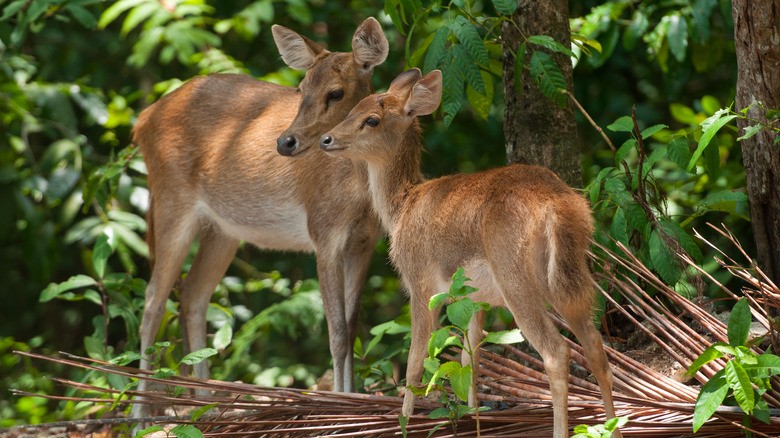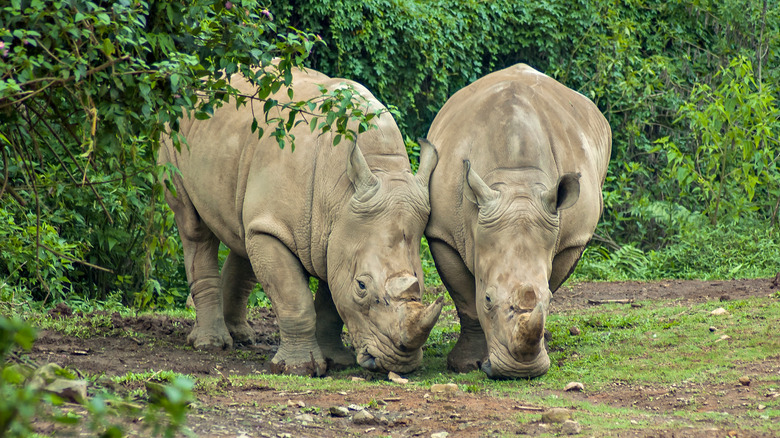Indonesia may be famous for having some of the best beaches in the world, but its islands also hold a variety of incredible wildlife that you won’t find anywhere else on Earth. One such extraordinary island is Java, which features Ujung Kulon National Park, home to the endangered one-horned Javan rhinoceros (pictured above), tucked away on the Southwestern end. It has been designated a UNESCO-listed World Heritage site due to its rainforests, geology, and outstanding beauty. The park also encompasses three additional islands – Panaitan, Peucang, and Handeuleum.
Java is truly special, and it inspired filmmakers like renowned naturalist David Attenborough in 1965 when his “Zoo Quest for a Dragon” documentary about the island’s lizards came out. “Monty Python” actor Michael Palin visited for his “Full Circle” series, and the BBC made a documentary called “The Jungle Gremlins of Java centered on Java’s slow loris. Even though this tropical island may seem far away from better-known Indonesian destinations like Bali, seeing its out-of-this-world wildlife is well worth the trip.
Preparing for your journey to Ujung Kulon National Park

Most visitors start their journey to Ujung Kulon National Park in the Javan city of Labuan or its nearby Carita Beach resort area. You can book a tour or transport to get to the park from both of these places. You can also get a motorboat to one of the islands or a bus to the entrance village of Tamanjaya. The bus journey from Labuan to the park takes around five hours.
If you don’t have a tour booked, you have the option to arrange a boat trip and guide from Tamanjaya or by going directly to the park’s office. There are guesthouses to stay in on the islands or in Tamanjaya. While at the park, you won’t just see jungle animals, as there are coral reefs at Peucang Island to spot tropical fish, so bring your snorkeling gear. There is so much to explore that you could easily spend three to four days or even longer looking for the awe-inspiring wildlife that thrives in this lesser-known paradise.
Wildlife in Ujung Kulon National Park

Aside from Ujung Kulon’s epic geography, plant life, and islands, the wildlife is the main draw for those visiting this park. The critically endangered Javan rhino, which still breeds there, is the most famous animal in the area. You may see other large mammals, too, including banteng (a wild cattle species), dhole (a wild dog), leopards, deer, and wild pigs.
Two primate species that are endemic to the island are the Javan gibbon and the Javan leaf monkey. Other smaller mammals found there are the leopard cat, previously mentioned slow loris, otters, squirrels, civets, and the Javan mongoose. Reptiles that you may see include crocodiles, monitor lizards, and green turtles that nest on the beaches. It is also an incredible place for birdwatching, with opportunities to see kingfishers, babblers, woodpeckers, honeyeaters, and sunbirds, amongst other species. If you love marine life, consider combining your trip with the Wakatobi National Park near Tomia Island, which has some of the best dive spots in the world.

